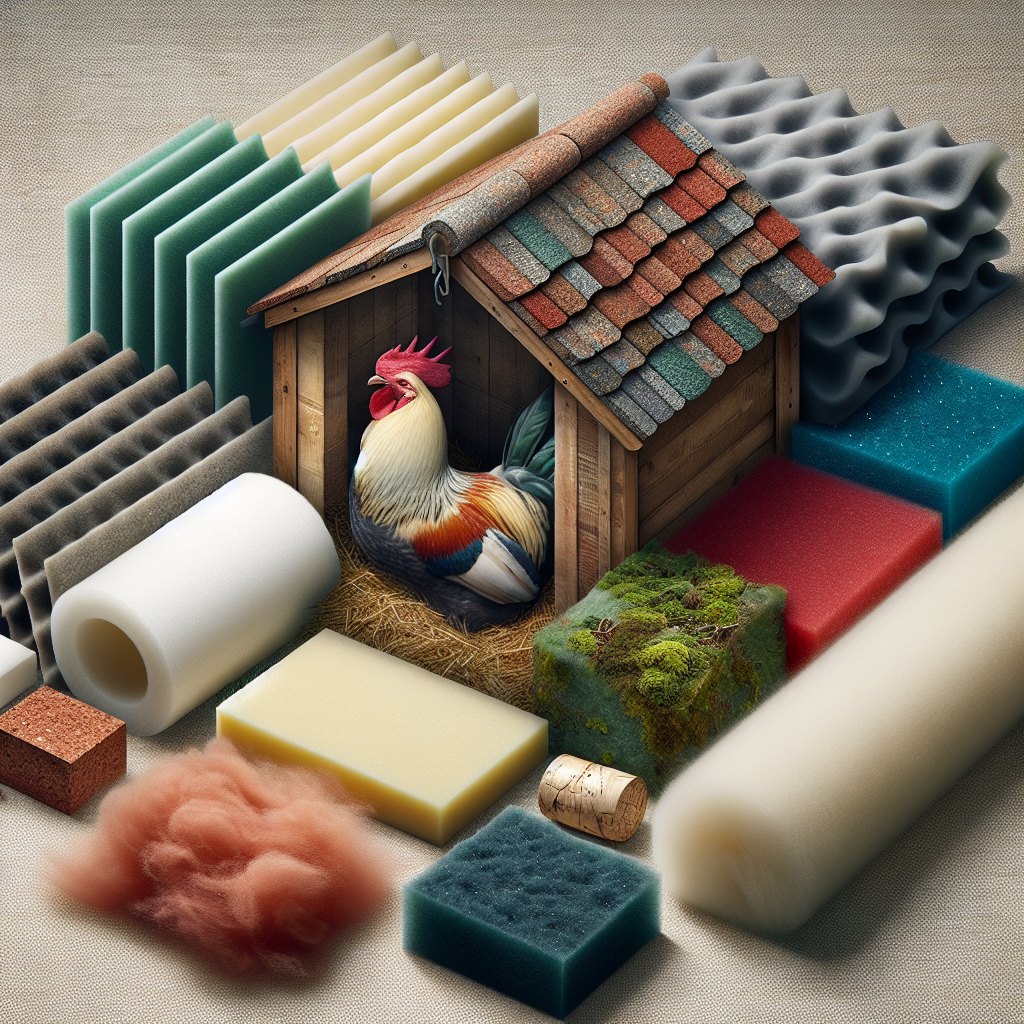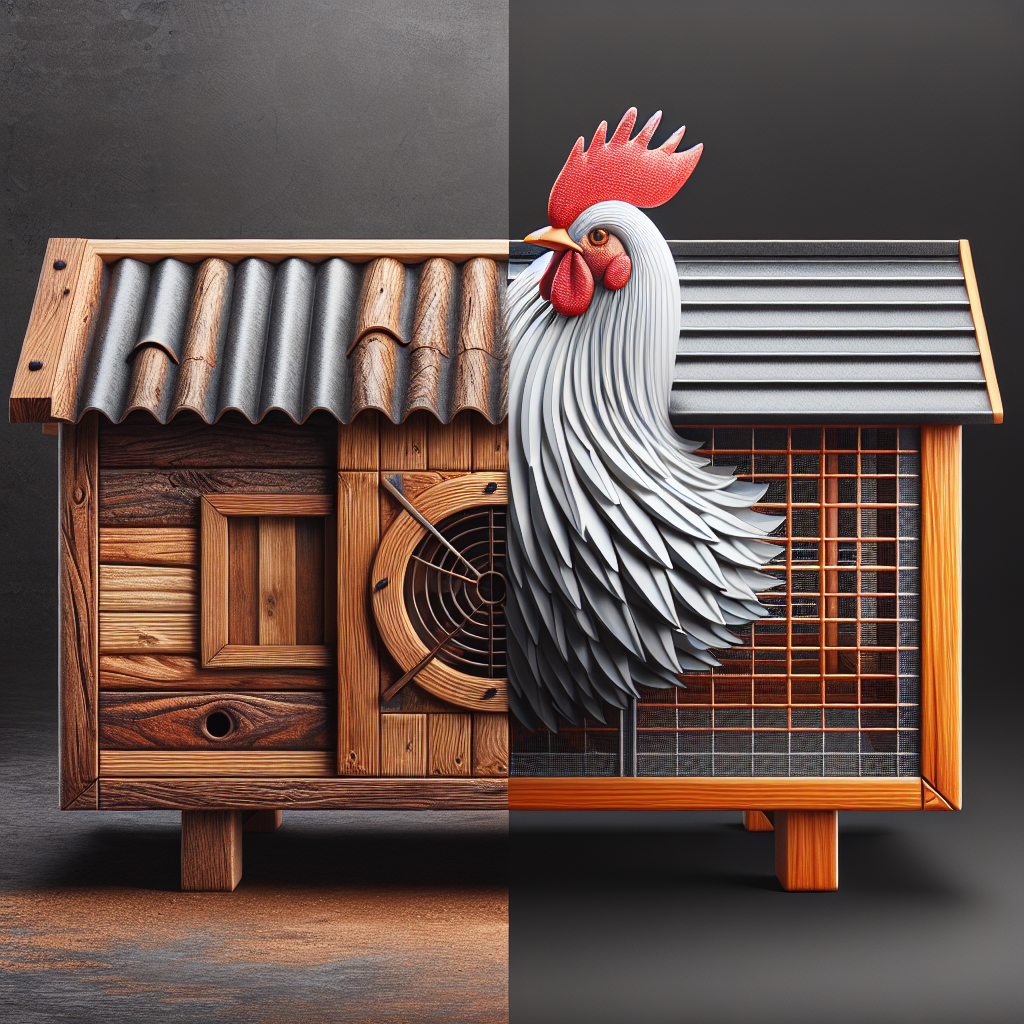Are you considering building or buying a chicken coop? If so, you might be wondering how different material choices can impact the overall cost of this project. The choice of materials for your chicken coop can greatly affect both the upfront expenses and the long-term maintenance costs. From budget-friendly options like plywood and wire mesh to more durable and costly choices like treated lumber or metal, each material has its own set of advantages and considerations. By understanding how material selections can influence your expenses, you can make an informed decision that aligns with your budget and needs.
Types of Chicken Coop Materials
When it comes to building or buying a chicken coop, the choice of materials plays a vital role in determining the overall cost. There are several common materials used in constructing chicken coops, including wood, metal, and plastic. Each material has its own set of advantages and considerations to keep in mind, so let’s explore each option in more detail.
Wood
Wood is a traditional and popular choice for chicken coops. It offers a classic and rustic look, blending well with the surrounding environment. One of the significant advantages of using wood is its cost-effectiveness. Wood materials are generally more affordable compared to metal or plastic. You can easily find wooden planks and panels at local hardware stores or repurpose salvaged wood for an eco-friendly approach.
In terms of durability, wood can stand the test of time if properly maintained. Regular sealing or painting can help protect it from weathering and decay. However, it’s worth noting that wood may be susceptible to rot and termite infestations, especially in damp or humid climates. Therefore, it’s important to choose rot-resistant wood or apply protective treatments to extend its lifespan.
Wooden chicken coops are relatively easy to construct, making them an attractive option for DIY enthusiasts. With basic carpentry skills and some tools, you can build a functional coop tailored to your specific needs. There are countless DIY plans and tutorials available online to guide you through the process.
Metal
Metal coops offer excellent durability and strength, making them a popular choice for those seeking a long-lasting solution. Galvanized steel or aluminum are commonly used for constructing metal chicken coops. While metal materials may come at a higher price point compared to wood, their longevity and sturdiness make them a worthwhile investment.
Metal coops are highly resistant to weather elements, such as rain, snow, and wind. They provide excellent protection against predators, including raccoons and rodents, thanks to their sturdy construction. Additionally, metal coops offer better insulation than wood, retaining heat during colder months and keeping the interior cool in hot summers.
However, one consideration with metal coops is the potential for condensation build-up. Without proper insulation and ventilation, moisture can accumulate, leading to damp and unhealthy conditions for the chickens. This issue can be mitigated by ensuring adequate airflow and incorporating insulation materials into the coop’s design.
Plastic
Plastic coops have gained popularity in recent years due to their lightweight nature, ease of cleaning, and low maintenance requirements. They are typically made from high-density polyethylene (HDPE) or recycled plastic materials. Plastic coops often come in modular designs, allowing for easy assembly and customization.
In terms of cost, plastic materials can be more expensive than wood but generally cheaper than metal. However, their durability can vary depending on the quality of the plastic used. Cheaper plastic coops may be prone to cracking or fading over time, especially when exposed to harsh sunlight. Therefore, opting for higher-quality plastic materials is recommended for long-term use.
Cleaning and maintenance are relatively hassle-free with plastic coops. They can be easily washed down with water and mild disinfectants, minimizing the risk of bacterial growth. Additionally, plastic surfaces discourage mites and other pests from taking hold, promoting a healthier coop environment.
Size of the Chicken Coop
Determining the size of your chicken coop is an essential consideration that will impact both material quantity and cost. The number of chickens you plan to keep and the space available in your backyard will play a crucial role in determining the appropriate coop size.
Material Quantity Required
The larger the size of the coop, the more materials you’ll need to construct it. This factor directly influences the overall cost of the project. Wood, metal, and plastic materials are typically sold in standard measurements, so calculating the required quantity can be relatively straightforward. However, it’s always advisable to purchase a little extra to account for potential mistakes or future modifications.
Cost Variation with Size
As the size of the coop increases, the overall cost of the project will naturally follow suit. More materials, such as wood planks, metal panels, or plastic modules, will be needed to cover a larger area and accommodate more chickens comfortably. It’s important to factor in this cost variation when budgeting for your chicken coop project.
Climate Considerations
The climate in your area is a crucial factor to consider when selecting the material for your chicken coop. Different materials offer varying levels of weather resistance and insulation properties, ensuring the comfort and well-being of your chickens throughout the year.
Weather Resistance of Materials
Wooden coops can withstand moderate weather conditions, but excessive exposure to rain or snow can lead to rot or decay over time. Metal coops, particularly those made from galvanized steel or aluminum, offer excellent resistance to weather elements and are highly durable in harsh climates. Plastic coops, especially those made from UV-protected materials, can withstand prolonged sun exposure without fading or deteriorating.
Insulation and Heat Retention
In colder climates, providing insulation to retain heat is crucial for the health of your chickens. Wooden coops can be insulated by adding additional layers of insulation material, such as foam boards or reflective insulation. Metal coops, although naturally better insulated than wood, may still benefit from insulation to maintain comfortable temperatures. Plastic coops generally have limited insulation properties, so extra measures may be necessary if you live in an extremely cold area.
Predator Protection
Protecting your chickens from predators is of utmost importance to ensure their safety. The choice of coop material can significantly impact the level of protection offered.
Material Strength and Security
Wood, while sturdy to some extent, may be vulnerable to predators such as raccoons and foxes. Reinforcing wooden coops with hardware cloth or metal mesh can help enhance their strength and prevent unauthorized entry. Metal coops offer excellent protection due to their solid construction and resistance to bending or breaking. Plastic coops typically have built-in security features such as lockable doors and windows, offering reliable predator protection.
Cost of Additional Security Features
Regardless of the material chosen, additional security features may need to be considered. Installing secure locks, predator-proof latches, and reinforced wiring can add to the overall cost of the coop. However, investing in these measures is essential to safeguard your chickens against potential threats.
Long-Term Costs
While the initial cost of building or buying a chicken coop is important to consider, it’s equally crucial to factor in the long-term costs associated with maintenance and potential replacements.
Maintenance and Repairs
Wooden coops may require regular maintenance such as sealing, painting, or replacing rotting parts. Metal coops generally require less maintenance, primarily limited to occasional inspections for rust or corrosion. Plastic coops have the advantage of low maintenance requirements, needing only periodic cleaning and checking for any signs of wear and tear.
Replacement Costs
Over time, all materials can deteriorate and require replacement. Wood may be more susceptible to damage, especially in humid or wet climates, requiring more frequent replacements. Metal coops, although highly durable, may eventually rust or develop structural issues that necessitate replacement. High-quality plastic coops can withstand the test of time, reducing the need for replacement in the long run.
Aesthetics and Customization
The appearance and customization options of your chicken coop can significantly influence your decision-making process. Each material offers different design possibilities and visual appeal.
Variety of Design and Finish Options
Wooden coops provide an array of design options and can be easily customized to suit individual preferences. From classic barn-style coops to modern designs, wood can be stained or painted in various colors to match your backyard aesthetic. Metal coops often have a sleek and industrial look, which may appeal to those seeking a more contemporary design. Plastic coops come in various modular designs, offering versatility in shaping and customizing them to fit your specific needs.
Cost of Customization
Customizing your chicken coop to reflect your personal style or blend naturally with your landscape comes at an additional cost. Custom finishes, decorative elements, and unique architectural features can increase the overall cost of the coop project. It’s essential to consider your budget and design preferences when evaluating the customization options available for each material.
Building Skills and Tools
Your level of construction expertise and the tools and equipment you have access to may influence your choice of coop material.
Construction Expertise
Wooden coops are generally more accessible for DIY projects, as they require basic carpentry skills. However, building a sturdy and functional coop from any material does require some level of construction expertise. If you lack experience or confidence in construction, you may want to consider seeking professional help or opting for pre-built coops made of your chosen material.
Tools and Equipment Required
Different materials may require varying tools and equipment for construction. Wooden coops may necessitate basic carpentry tools, such as saws, hammers, and drills. Metal coops may require welding or specialized cutting tools. Plastic coops typically come with easy-to-assemble components that can be put together using basic hand tools. Assessing the tools and equipment you have available or are willing to invest in is an important factor to determine which material suits your capabilities.




